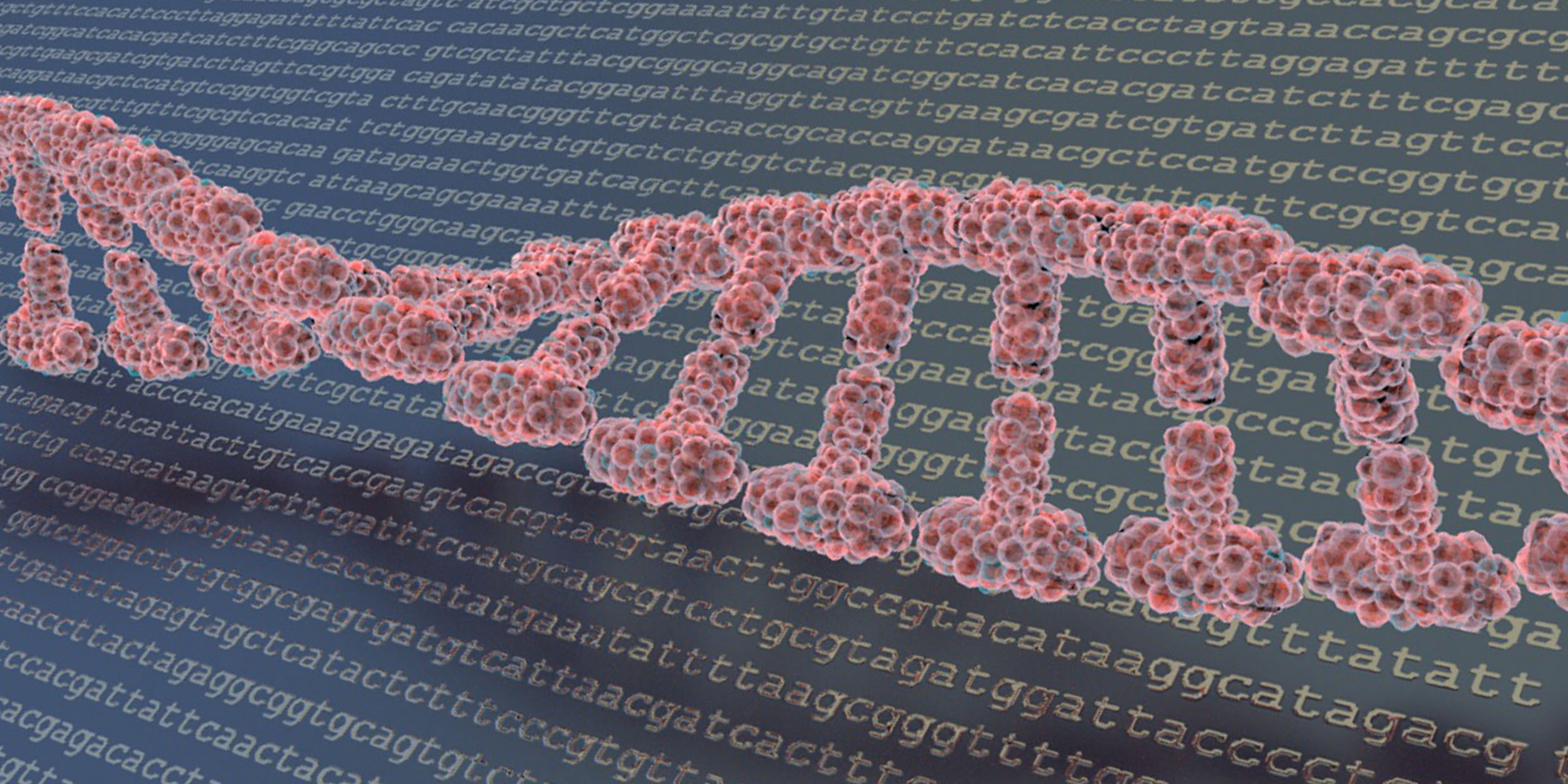Originally published 25 April 1994
Forty-one years ago today [in 1953], James Watson and Francis Crick published a paper in the journal Nature announcing their discovery of the structure of DNA.
What they proposed had a compelling simplicity: A molecule in the form of a spiral staircase. The side rails of the staircase are linked sugars and phosphates. The treads are molecules called organic bases, arranged as pairs. The bases, four in kind, are adenine, thymine, guanine, and cytosine, usually labeled simply A, T, G, and C. Base A always pairs with T; G always pairs with C. The sequence of pairs along the staircase is the genetic code.
Watson and Crick added an almost parenthetical remark to their announcement: “It has not escaped our notice that the specific pairing we have postulated immediately suggests a possible copying mechanism for the genetic material.”
This is what they had in mind: When a living cell replicates, the DNA staircase unzips down the middle of the “treads.” Each unpaired base attracts its complement; each half of the staircase completes itself. One set of genes becomes two, two become four, four become eight. Life copies itself in a whirling dervish chemical dance.
The idea is so simple as to be breathtaking.
The search for the genetic mechanism was one of the great detective stories of science, and the double helix of Watson and Crick was its culmination.
As the two scientists struggled to discover the structure of DNA, they built a model of the proposed molecule, as tall as their lab was high, with cardboard cutouts representing chemical units, supported by steel rods and test-tube holders. Photographs show a make-do, jerry-built thing, but still the beauty comes through: the ascending spiral, the step-by-step plan for building a living organism.
Modern versions of the Watson and Crick model can be found today in most science museums. No experience has so impressed upon me the wonder of material creation as standing before the giant stick-and-ball model of a DNA strand at the Boston Museum of Science.
Stunning. Elegant. God’s Tinkertoy set. The secret of life.
Now, forty-one years later, scientists continue to play with God’s Tinkertoy, but in a different way. Today’s molecular chemists do their tinkering on the screens of powerful computers.
The images are often spectacular. A cross-section of the DNA double helix, displayed in shimmering color on a computer, is no less beautiful than the rose window of Chartres Cathedral.
Computers make possible a kind of molecular play that would never have been possible with stick-and-ball models, much less with Watson and Crick’s cardboard cutouts and test-tube clamps. Proteins are made to reveal their secrets with a few clicks of a mouse. DNA and RNA strands twist and curl — electronically.
Hugely complex molecules work their animating magic — digitally.
In principle, all of this could be done with mechanical models; but in practice no one would have the time, the space, or the patience to do it. Computers open up a vast cyberspace for molecular modeling, in which molecules can be digitally assembled and manipulated at essentially the speed of light.
What is particularly fascinating about these developments is that we are allowed to participate visually in the research, even if we don’t understand very much of the science behind it.
Our situation is rather like that of worshipers in the great cathedrals of the Middle Ages. They may not have grasped much metaphysics or theology, but they saw the ideas of philosophers and theologians embodied in stone and light. In the same way, computer-generated molecules make visible the hidden
machinery of life.
There are those — perhaps the majority of Americans — who decry this new knowledge of life. They are repelled by the idea that life can be reduced to Tinkertoy molecules interacting chemically, following rules that can be programmed into a computer. Scientists, they say, are robbing us of the mystery of life.
Nonsense! The Gothic cathedrals did not diminish the mystery of God, nor do computer images of DNA and proteins diminish the mystery of life.
Erwin Chargaff, who contributed mightily to our understanding of DNA, wrote: “It is the sense of mystery that, in my opinion, drives the true scientist; the same blind force, blindly seeing, deafly hearing, unconsciously remembering, that drives the larva into the butterfly. If the scientist has not experienced, at least a few times in his life, this cold shudder down his spine, this confrontation with an immense invisible face whose breath moves him to tears, he is not a scientist.”
Observing computer images of the new molecular biology, I have often felt a cold shudder down the spine. It is hard to imagine how anyone would not feel it.



